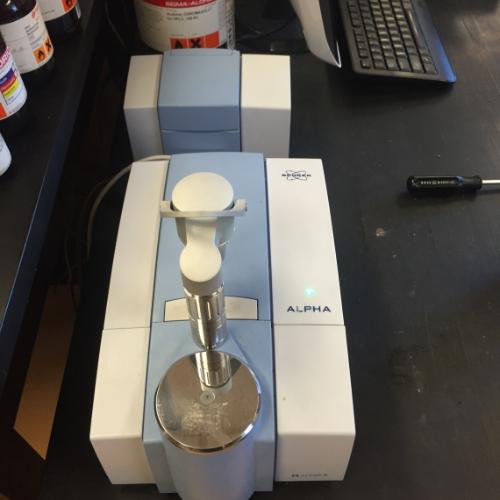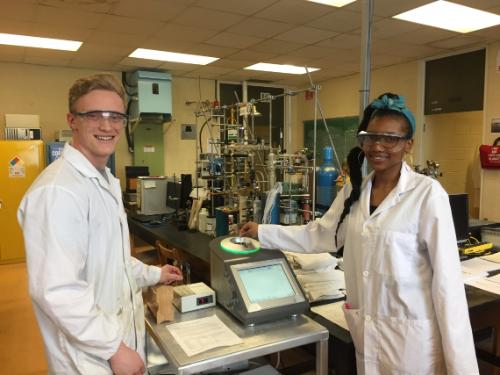Teaching Instrumentation
Providing our students with access to state-of-the-art instrumentation is a major priority for the department. Students are trained to use these instruments in our laboratories and in their research.
Nuclear Magnetic Resonance Spectroscopy
Nuclear Magnetic Resonance (NMR) spectroscopy is one of the most powerful techniques to determine the structure and properties of molecules. When a strong magnetic field is applied to a sample, the up and down spin states of the nuclei hold different energies. Molecules can absorb electromagnetic radiation in the radio part of the spectrum, which reveals information about how the atoms are bonded together and their chemical environment. These instruments typically cost hundreds of thousands of dollars and require specialized staff and facilities, which had prevented students from gaining sufficient experience with these instruments. Our department has purchased two "benchtop" NMR spectrophotometers from Nanalysis Corp, so our students gain extensive hands-on experience with these instruments.
Electron Paramagnetic Resonance Spectroscopy
Some molecules have unpaired electrons and an applied magnetic field will cause them to take on different energy levels. In Electron Paramagnetic Resonance (EPR) spectroscopy, this effect is used to observe the presence of these molecules and the environment of these unpaired electrons in the molecule. Our department is unique in having a dedicated MiniScope MS 300 EPR spectrophotometer for our undergraduate students.
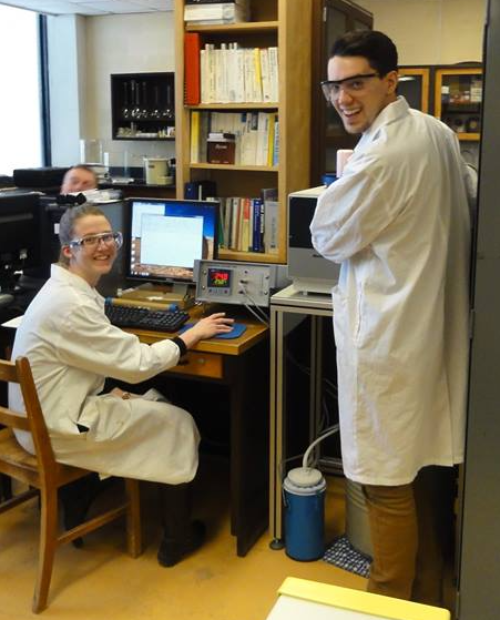
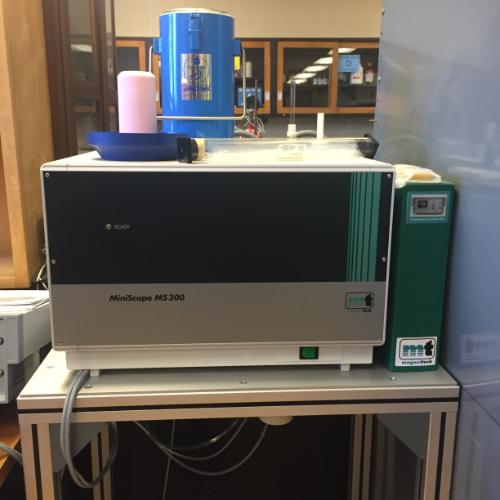
UV/Vis Spectroscopy
Some molecules have types of bonding where ultraviolet or visible light can cause them to be excited into a higher electronic state. Our department has a Cary 100 UV/Vis spectrophotometer that can measure the frequencies of radiation absorbed and their intensities.
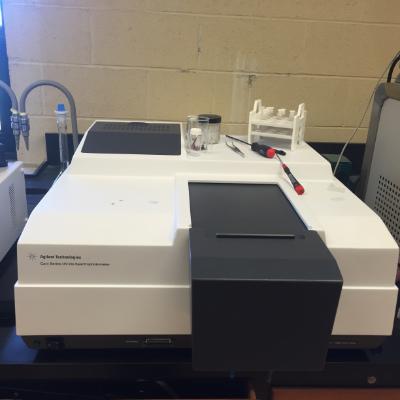
Near-IR Spectroscopy
The near-infrared (NIR) region of the electromagnetic spectrum corresponds to low-intensity transitions between vibrational states. Because the intensity is low, the radiation can probe more deeply into a sample and is effective for highly-concentrated samples. For example, our students use NIR spectroscopy in combination with numerical analysis to determine the composition of a mixture of hydrocarbon liquids.
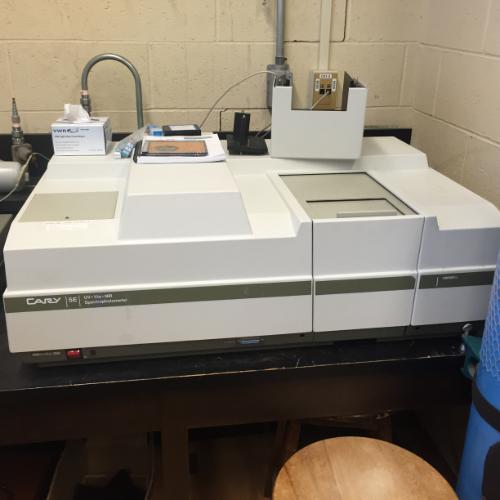
Infrared Spectroscopy
Molecules undergoing transitions in their vibrational states can absorb radiation in the infrared (IR) region of the electromagnetic spectrum. The frequencies of IR radiation provide chemists information about what vibrational frequencies are present, allowing the molecule to be identified. It can also be used to determine the concentration of a molecule in a sample and the nature of chemical bonding in the molecule. Our physical chemistry teaching laboratory is equipped with a Bruker Alpha FTIR Spectrometer with a single-reflectance diamond ATR, transmission compartment, and single reflectance germanium ATR.
